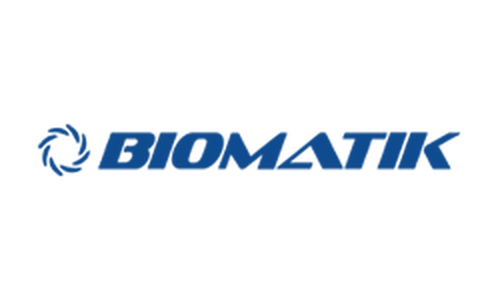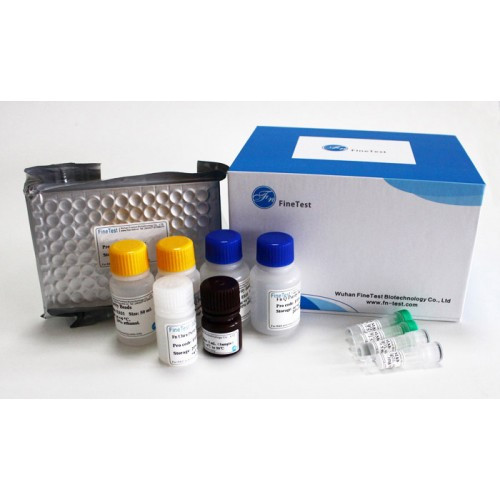Product Description
Recombinant Human Interleukin-36 beta protein (IL36B) (Active) is available at Gentaur for Next week Delivery.
Gene Name: IL36B,IL1F8,IL1H2
Alternative Names : FIL1 eta, IL-1 eta, Interleukin-1 family member 8, IL-1F8, Interleukin-1 homolog 2
Expression Region : 5-157aa
AA Sequence : REAAPKSYAI RDSRQMVWVL SGNSLIAAPL SRSIKPVTLH LIACRDTEFS DKEKGNMVYL GIKGKDLCLF CAEIQGKPTL QLKEKNIMDL YVEKKAQKPF LFFHNKEGST SVFQSVSYPG WFIATSTTSG QPIFLTKERG ITNNTNFYLD SVE
Sequence Info : Partial of Isoform 2
Tag Info : Tag-Free
Theoretical MW : 17.2 kDa
Storage Buffer : Lyophilized from a 0.2 µm filtered 2 × PBS, pH 7.4
Endotoxin Level : Less than 1.0 EU/µg as determined by LAL method.-
Biological Activity : The ED50 as determined by inducing IL-8 secretion in human preadipocytes is less than 10 ng/ml, corresponding to a specific activity of ? 1.0 × 105 IU/mg.
Storage : Short term: -20°C; Long term: -80°C. Minimize freeze and thaw cycles.
Research Area : Immunology
Restriction : For Research Use Only. Not for use in diagnostic procedures, drug use, or for administration to humans or animals.
Relevance : Cytokine that binds to and signals through the IL1RL2/IL-36R receptor which in turn activates NF-kappa-B and MAPK signaling pathways in target cells linked to a pro-inflammatory response. Part of the IL-36 signaling system that is thought to be present in epithelial barriers and to take part in local inflammatory response; similar to the IL-1 system with which it shares the coreceptor IL1RAP. Stimulates production of interleukin-6 and interleukin-8 in synovial fibrobasts, articular chondrocytes and mature adipocytes. Induces expression of a number of antimicrobial peptides including beta-defensins 4 and 103 as well as a number of matrix metalloproteases. Seems to be involved in skin inflammatory response by acting on keratinocytes, dendritic cells and indirectly on T cells to drive tissue infiltration, cell maturation and cell proliferation. In cultured keratinocytes induces the expression of macrophage, T cell, and neutrophil chemokines, such as CCL3, CCL4, CCL5, CCL2, CCL17, CCL22, CL20, CCL5, CCL2, CCL17, CCL22, CXCL8, CCL20 and CXCL1, and the production of proinflammatory cytokines such as TNF-alpha, IL-8 and IL-6. {ECO:0000269|PubMed:16646978, ECO:0000269|PubMed:20300079, ECO:0000269|PubMed:21242515, ECO:0000269|PubMed:21881584, ECO:0000269|PubMed:21965679, ECO:0000269|PubMed:24829417}.
Function : Cytokine that binds to and signals through the IL1RL2/IL-36R receptor which in turn activates NF-kappa-B and MAPK signaling pathways in target cells linked to a pro-inflammatory response. Part of the IL-36 signaling system that is thought to be present in epithelial barriers and to take part in local inflammatory response; similar to the IL-1 system with which it shares the coreceptor IL1RAP. Stimulates production of interleukin-6 and interleukin-8 in synovial fibrobasts, articular chondrocytes and mature adipocytes. Induces expression of a number of antimicrobial peptides including beta-defensins 4 and 103 as well as a number of matrix metalloproteases. Seems to be involved in skin inflammatory response by acting on keratinocytes, dendritic cells and indirectly on T-cells to drive tissue infiltration, cell maturation and cell proliferation. In cultured keratinocytes induces the expression of macrophage, T-cell, and neutrophil chemokines, such as CCL3, CCL4, CCL5, CCL2, CCL17, CCL22, CL20, CCL5, CCL2, CCL17, CCL22, CXCL8, CCL20 and CXCL1, and the production of proinflammatory cytokines such as TNF-alpha, IL-8 and IL-6.
Involvement in disease :
Subcellular location : Secreted
Protein Families : IL-1 family
Tissue Specificity : Expression at low levels in tonsil, bone marrow, heart, placenta, lung, testis and colon but not in any hematopoietic cell lines. Not detected in adipose tissue. Expressed at higher levels in psoriatic plaques than in symptomless psoriatic skin or healthy control skin. Increased levels are not detected in inflamed joint tissue.
Paythway :
Uniprot ID : Q9NZH7
 Euro
Euro
 British Pound
British Pound
 US Dollar
US Dollar








